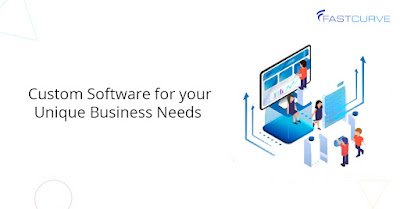Steps to Conduct Effective UX Research for Software Development
The competitive software marketplace calls for an understanding of user experience (UX), which is crucial to materializing products. Efficient UX research underpins the cornerstone of being able to make well-informed design decisions.
This considers the software needs and expectations of the users. If developers can systematically obtain insights into user behavior, preferences, and frustrations, they can then create intuitive interfaces.
That ultimately leads to user satisfaction. This series of steps encompasses multiple UX research methods, including interviews, surveys, and usability testing. This also provides additional valuable data to influence the direction of design iterations.
In a user-centered approach to AI in software development, with a more UX-oriented life cycle, there will be a greater degree of usability for the product and increased chances of user loyalty. Therefore, excellent business success.
The present introduction gives insight into how to carry out effective UX research while emphasizing its importance in delivering software solutions. This also offers quality and resonance with the user.
Role of UX research
User experience research is an integral part of the software development life cycle, it ensures that the products are developed with a user-centric view. UX research is actually a systematic technique in evolving insights about user behaviors and needs, including pain points and other old or new methodologies like interviews, usability testing, or online surveys.
Such usability research assists in understanding user expectations in order to inform design decisions and create more intuitive, immersive interfaces.
Such understanding of an audience made it possible for developers to equip their solutions with fixing more real-life problems, eventually leading to greater satisfaction with the solution. Besides, the user research study also aids in sorting the different features in terms of priority through the users' evaluation, which leads to much better management of resources.
UX research also acts as a tool for working across teams for collaboration amongst the various stakeholders in the project to agree on user needs and design goals. The factor of user research within software development services at this time in this rapidly changing digital landscape will improve not only the usability of the products but also the business successes by creating software that resonates with and has a substantial product fit with users' expectations.
Benefits of UX research
Indeed, there are several advantages to conducting UX research that have significantly improved the process through which users are involved in software development. First, the understanding that comes from a UX research agency will be able to recognize the user needs and behaviors ever since the designers are ready to create products meaningfully targeting the audience.
This user-centered design produces usability improvements, which ultimately increase user satisfaction and engagement.
Similarly, the user research agency foresees the problems in due time, raising the potential for expensive redesigns. Thus, putting the performance of features in order based on user evaluation enables the more appropriate distribution of resources to give more priority to the activity that is most beneficial.
Equally, through UX research, cross-functional team collaboration is improved in bringing users and designers on the same line regarding user needs and design objectives. Transform communication and swift decision-making.
Finally, the information gained from UX design research can help to develop even more successful products so that user loyalty would increase and, as a result, the success of the business itself would grow stronger in the already competitive market.
Steps to conduct effective UX research for software development
It's a systematic approach that will make sure usability comes first in the design phase for effective UX research. Below are the most elemental processes:
1. Define purpose: Leading IT services first step is to develop clear research objectives. What do you want the answer to? This provides direction to the research in terms of methods and focus.
2. Study on your users: Who are your different users? Create users' personas that best embody your various audiences in order to apply the most suitable research to each of them.
3. Select research methods: Choose appropriate methods depending on your objectives. Surveys, interviews, discussions, and usability studies form a part of the most classical forms of user research. Each one has a different story to tell.
4. Research: Carry out those selected methods to receive the data. Provide the atmosphere wherein the participant would feel most comfortable providing frank comments.
5. Data analysis: After the data are collected, analyze these based on recurring patterns, trends, and key insights identified. It's in broad common pain points and customer behaviors that help in making design decisions.
6. Create user personas and journey maps: Synthesize everything you have learned into user personas and journey maps. This kind of tool helps you visualize user experiences and pinpoint improvement opportunities.
7. Iterate on design: Use the insights gained to iterate designs. Build prototypes and conduct UX testing with users so that you may gather their input and revise your design.
8. Validating solutions: Hence, usability testing of UX while closing a product would confirm whether it is now compliant with the needs and expectations of users.
Rapid UX research is necessary in developing user-centered testing in software development. By systematically understanding the user's needs and behaviors, a developer can build intuitive interfaces to improve satisfaction and loyalty. A structured approach to UX research enhances usability.
This also encourages working among teams so that, ultimately, the outcome is well-resonated products in the market and the success of the business at the competitive level.
Fastcurve is a global IT services and consultancy firm dedicated to delivering accelerated, high-quality outcomes for businesses. They specialize in software development, cloud solutions, and IT consulting, focusing on improving IT services for SMEs while ensuring efficiency and cost-effectiveness across various industries.



Comments
Post a Comment